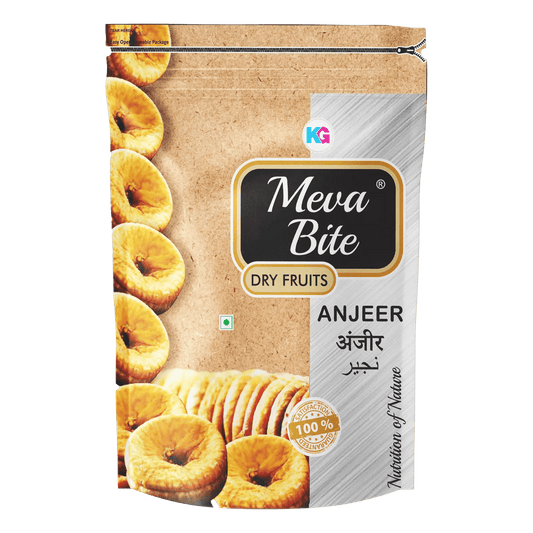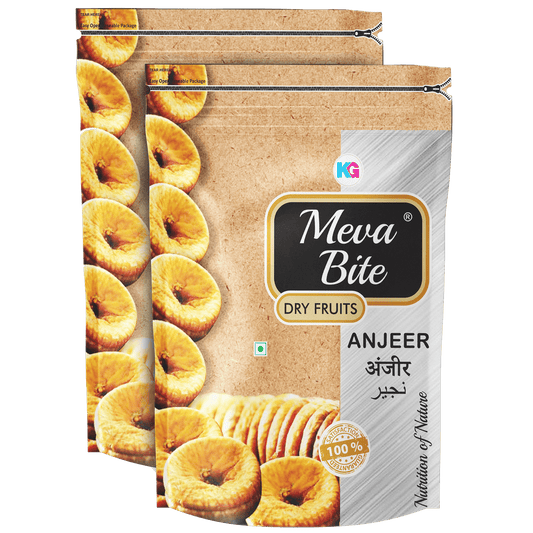In the world of nut butters, almond butter and peanut butter stand out as popular choices. Both offer unique flavors and nutritional benefits, but how do they really compare? Let's dive into a comprehensive analysis of almond butter versus peanut butter.
What are the main nutritional differences between almond butter and peanut butter?
Short answer: Almond butter generally has higher vitamin E, magnesium, and fiber content, while peanut butter is richer in protein and vitamin B3. Both are calorie-dense with similar fat content.
Detailed answer:
-
Calorie content:
- Almond butter: Approximately 98 calories per tablespoon
- Peanut butter: Approximately 96 calories per tablespoon
-
Fat content:
- Both contain about 8-9 grams of fat per tablespoon
- Almond butter has slightly more monounsaturated fat
- Peanut butter has slightly more saturated fat
-
Protein content:
- Almond butter: 3.4 grams per tablespoon
- Peanut butter: 4 grams per tablespoon
-
Fiber content:
- Almond butter: 1.6 grams per tablespoon
- Peanut butter: 1 gram per tablespoon
-
Vitamin and mineral content:
- Almond butter is higher in:
- Vitamin E
- Magnesium
- Iron
- Peanut butter is higher in:
- Vitamin B3 (Niacin)
- Vitamin B6
- Almond butter is higher in:
-
Sugar content:
- Both are naturally low in sugar
- Unsweetened varieties contain less than 1 gram per serving
Which butter is better for weight loss: almond or peanut?
Short answer: Both almond and peanut butter can support weight loss when consumed in moderation. Almond butter has slightly fewer calories and more fiber, which may give it a slight edge.
Detailed answer:
-
Calorie comparison:
- Almond butter has slightly fewer calories (98 vs 96 per tablespoon)
- The difference is minimal and unlikely to significantly impact weight loss
-
Fiber content:
- Almond butter has more fiber (1.6g vs 1g per tablespoon)
- Higher fiber content may promote feelings of fullness
-
Protein content:
- Peanut butter has slightly more protein (4g vs 3.4g per tablespoon)
- Protein can help with satiety and muscle maintenance during weight loss
-
Fat profile:
- Almond butter has more monounsaturated fats
- Monounsaturated fats may support heart health and weight management
-
Portion control:
- Both are calorie-dense, so portion control is crucial for weight loss
- Recommended serving size is typically 1-2 tablespoons
How do almond butter and peanut butter compare in terms of taste and texture?
Short answer: Almond butter has a milder, slightly sweet taste with a grainier texture. Peanut butter has a strong, distinctive flavor and a smoother, creamier texture.
Detailed answer:
-
Taste profile:
- Almond butter:
- Milder, subtly sweet flavor
- Nutty undertones
- Less intense than peanut butter
- Peanut butter:
- Strong, distinctive peanut flavor
- Can be sweet or savory depending on additives
- Almond butter:
-
Texture comparison:
- Almond butter:
- Generally grainier
- Often less smooth than peanut butter
- May have small almond pieces depending on processing
- Peanut butter:
- Usually smoother and creamier
- Varieties range from extra smooth to chunky
- Almond butter:
-
Consistency:
- Almond butter tends to be slightly runnier at room temperature
- Peanut butter is often thicker and spreads more easily
-
Aftertaste:
- Almond butter leaves a subtle, clean aftertaste
- Peanut butter's flavor tends to linger longer
-
Versatility in recipes:
- Almond butter works well in both sweet and savory dishes
- Peanut butter's strong flavor can dominate in recipes
Are there any significant health benefits of choosing almond butter over peanut butter?
Short answer: Almond butter offers higher amounts of vitamin E, magnesium, and fiber. It may have slight advantages for heart health and blood sugar control. However, both are nutritious options.
Detailed answer:
-
Heart health:
- Almond butter has more monounsaturated fats, which may support heart health
- Both can be part of a heart-healthy diet when consumed in moderation
-
Blood sugar control:
- Almond butter has a lower glycemic index
- It may have a slight edge in managing blood sugar levels
-
Antioxidant content:
- Almond butter is higher in vitamin E, a powerful antioxidant
- This may offer more protection against oxidative stress
-
Bone health:
- Almond butter provides more calcium and magnesium
- These minerals are essential for maintaining strong bones
-
Digestive health:
- Higher fiber content in almond butter may support digestive health
- Both can contribute to a healthy gut when part of a balanced diet
-
Allergy considerations:
- Almond butter may be a suitable alternative for those with peanut allergies
- However, tree nut allergies are also common, so individual tolerance varies
How do almond butter and peanut butter differ in terms of price and availability?
Short answer: Peanut butter is generally less expensive and more widely available than almond butter. Almond butter tends to be pricier due to higher production costs and lower supply.
Detailed answer:
-
Price comparison:
- Peanut butter is typically 50-100% cheaper than almond butter
- Price varies based on brand, quality, and whether it's organic
-
Availability:
- Peanut butter is found in most grocery stores worldwide
- Almond butter is becoming more common but may not be available everywhere
-
Production factors:
- Peanuts are easier and cheaper to grow than almonds
- Almond trees require more water and take longer to mature
-
Market demand:
- Peanut butter has been a staple for longer, leading to higher production
- Almond butter demand has increased recently, but supply is still catching up
-
Packaging sizes:
- Peanut butter often comes in larger, more economical sizes
- Almond butter is typically sold in smaller jars
-
Store brands vs. specialty brands:
- Many stores offer affordable store-brand peanut butter
- Almond butter more often comes from specialty or health food brands
Can almond butter and peanut butter be used interchangeably in recipes?
Short answer: In most cases, almond butter and peanut butter can be used interchangeably in recipes. However, their distinct flavors and slight texture differences may affect the final result.
Detailed answer:
-
Baking applications:
- Both work well in cookies, brownies, and energy bars
- Almond butter may result in a milder flavor and slightly different texture
-
Smoothies and shakes:
- Either can be used to add creaminess and protein
- Flavor profile will change based on which butter is used
-
Savory dishes:
- Peanut butter is more commonly used in savory recipes (e.g., Thai peanut sauce)
- Almond butter can be substituted but will alter the traditional flavor
-
Spreads and dips:
- Both work well as spreads on toast or in dips
- Personal preference for flavor will be the main deciding factor
-
No-bake recipes:
- Both can bind ingredients in no-bake snacks and desserts
- Almond butter may require slight adjustments in liquid ingredients due to its runnier consistency
-
Allergies and dietary restrictions:
- Almond butter can replace peanut butter in recipes for those with peanut allergies
- Consider nut allergies when making substitutions
Which butter has a longer shelf life: almond or peanut?
Short answer: Peanut butter generally has a longer shelf life than almond butter. Unopened peanut butter can last 6-24 months, while almond butter typically lasts 3-6 months.
Detailed answer:
-
Shelf life comparison:
Butter Type Unopened Opened (Refrigerated) Peanut 6-24 months 3-6 months Almond 3-6 months 3-5 months -
Factors affecting shelf life:
- Oil content: Higher oil content in almond butter can lead to faster rancidity
- Additives: Preservatives in commercial brands can extend shelf life
- Storage conditions: Proper storage is crucial for both types
-
Signs of spoilage:
- Rancid smell
- Change in color or texture
- Mold growth
-
Proper storage methods:
- Store in a cool, dry place away from direct sunlight
- Refrigerate after opening to extend shelf life
- Use clean utensils to prevent contamination
-
Natural vs. commercial varieties:
- Natural, preservative-free butters have shorter shelf lives
- Commercial brands with stabilizers last longer
-
Packaging impact:
- Airtight containers help preserve freshness
- Glass jars may offer better protection than plastic
Are there any notable differences in the processing methods of almond butter versus peanut butter?
Short answer: Both almond and peanut butter undergo similar basic processing: roasting, grinding, and packaging. However, almond butter often requires more intensive grinding due to almonds' harder texture.
Detailed answer:
-
Roasting process:
- Both almonds and peanuts are typically roasted before grinding
- Roasting temperatures and times may vary, affecting flavor intensity
-
Grinding method:
- Peanuts grind more easily due to their softer texture
- Almonds require more powerful grinding equipment and longer processing time
-
Oil separation:
- Natural almond butter separates more readily, often requiring stirring before use
- Some peanut butters use stabilizers to prevent separation
-
Additives:
- Commercial peanut butter often contains more additives (sugar, salt, oils)
- Almond butter is more commonly found in its pure form
-
Texture variations:
- Peanut butter is easier to process into very smooth consistencies
- Almond butter often retains a slightly grainier texture
-
Production scale:
- Peanut butter is produced on a larger industrial scale
- Almond butter production is often smaller-scale or artisanal
Conclusion
For weight management, both can be effective when consumed in moderation. Almond butter may have a slight edge due to its higher fiber content and lower calorie count, but the difference is minimal. In terms of taste and texture, peanut butter offers a stronger, more distinctive flavor and smoother consistency, while almond butter provides a milder taste with a grainier texture.
While almond butter is generally more expensive and less widely available, it's gaining popularity for its potential health benefits. Both nut butters can be used interchangeably in many recipes, offering versatility in the kitchen. Peanut butter typically has a longer shelf life, but proper storage is crucial for both types to maintain freshness.
Ultimately, incorporating either or both of these nut butters into your diet can contribute to a nutritious and delicious eating plan. As with any food, moderation is key, and individual dietary needs and preferences should guide your choice.






